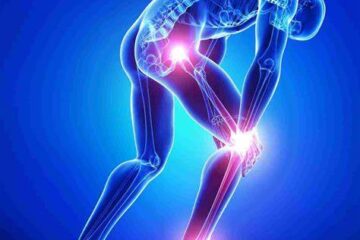Chronic pain is a complex and challenging condition that affects millions of people worldwide. It can result from various underlying issues, including injuries, medical conditions, or even unknown causes. While chronic pain can be debilitating, there is hope for effective management and improved quality of life through physiotherapy. In this comprehensive guide, we will explore the role of physiotherapy in chronic pain management, various techniques and approaches, and practical tips for individuals seeking relief.
Understanding Chronic Pain
Chronic pain is defined as pain that persists for 12 weeks or longer, often extending well beyond the expected healing time. It can affect any part of the body and may manifest in different forms, such as:
- Musculoskeletal pain (e.g., back pain, joint pain)
- Neuropathic pain (resulting from nerve damage)
- Headaches and migraines
- Abdominal or pelvic pain
- Fibromyalgia
- Chronic regional pain syndrome (CRPS)
- And more
The impact of chronic pain extends beyond the physical realm, often leading to emotional distress, sleep disturbances, and a reduced quality of life.
The Role of Physiotherapy in Chronic Pain Management
Physiotherapy, also known as physical therapy, is a healthcare profession focused on optimizing physical function and mobility. In the context of chronic pain, physiotherapists play a crucial role in assessing, diagnosing, and providing targeted interventions to manage and alleviate pain. Here’s how physiotherapy can benefit individuals with chronic pain:
1. Pain Assessment and Diagnosis
Physiotherapists are skilled in conducting comprehensive assessments to identify the underlying causes and contributors to chronic pain. This includes evaluating musculoskeletal, neurological, and biomechanical factors that may be contributing to the pain.
2. Tailored Treatment Plans
Following the assessment, physiotherapists develop personalized treatment plans that address the unique needs and goals of each individual. These plans may include a combination of therapeutic modalities and exercises.
3. Pain Education
Understanding pain is a critical component of pain management. Physiotherapists educate patients about the nature of chronic pain, its triggers, and how it affects the body. This knowledge empowers patients to actively participate in their pain management.
4. Exercise and Rehabilitation
Physiotherapists prescribe specific exercises to improve strength, flexibility, and mobility. These exercises are designed to target the underlying issues contributing to pain and promote overall physical health.
5. Manual Therapy
Manual therapy techniques, such as joint mobilization and soft tissue manipulation, can help alleviate pain and improve joint function.
6. Pain-Relieving Modalities
Physiotherapists may use modalities like heat, cold therapy, ultrasound, or electrical stimulation to reduce pain and inflammation.
7. Functional Restoration
Physiotherapy aims to restore an individual’s ability to perform daily activities and participate in life fully. This includes addressing functional limitations caused by chronic pain.
8. Lifestyle and Ergonomic Advice
Physiotherapists offer guidance on making lifestyle modifications and ergonomic adjustments to reduce pain triggers in daily life.
Conditions Treated with Physiotherapy
Physiotherapy can be effective in managing chronic pain associated with various conditions, including:
- Low back pain: Physiotherapy interventions, including exercise and manual therapy, are often recommended as a first-line treatment for chronic low back pain.
- Arthritis: Physiotherapy can help improve joint function, reduce pain, and enhance the quality of life for individuals with arthritis.
- Neuropathic pain: Techniques such as nerve gliding exercises and desensitization can be beneficial for neuropathic pain conditions.
- Fibromyalgia: Physiotherapy focuses on exercise programs tailored to the individual’s capabilities and pain thresholds.
- Headaches and migraines: Posture correction, neck exercises, and relaxation techniques are often part of physiotherapy for headache management.
- Complex regional pain syndrome (CRPS): Physiotherapy aims to improve circulation, reduce swelling, and enhance mobility in CRPS patients.
Practical Tips for Chronic Pain Management
1. Seek Early Intervention
Don’t wait for chronic pain to worsen. Early intervention, including physiotherapy, can prevent the condition from progressing.
2. Stay Active
Engage in regular physical activity within your pain tolerance. Physiotherapists can guide you on appropriate exercises.
3. Pain Journal
Keep a pain journal to track your pain patterns, triggers, and the effectiveness of treatments.
4. Holistic Approach
Consider complementary therapies like acupuncture, massage therapy, or mindfulness practices alongside physiotherapy.
5. Lifestyle Modifications
Make necessary adjustments to your daily routine, including ergonomic improvements at work and home.
6. Psychological Support
Chronic pain often has psychological components. Seek support from a mental health professional to address these aspects.
7. Medication Management
Consult with your healthcare provider regarding medication options for pain relief.
Conclusion
Chronic pain is a multifaceted condition that requires a comprehensive approach to management. Physiotherapy is a valuable component of this approach, offering personalized interventions that address the root causes of pain and improve physical function. By seeking early intervention, staying active, and adopting a holistic approach to pain management, individuals living with chronic pain can regain control of their lives and experience meaningful relief. Always consult with healthcare professionals, including physiotherapists, to develop a tailored pain management plan that suits your unique needs.




